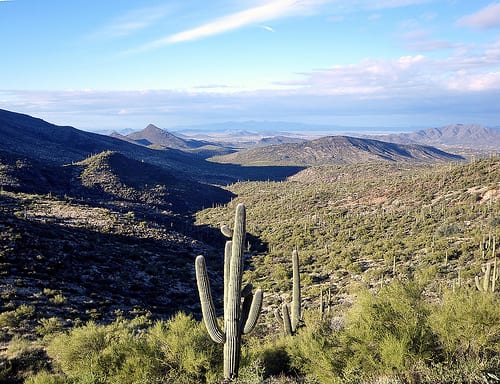Title to most of the tribal lands in the United States is held by the United States government in trust for the benefit of existing and future generations of tribal populations. The government has a responsibility under this trust in two broad areas: property oriented duties to protect tribal property and assets (natural resources such as water, oil, timber, etc.), and honor the guarantee of self-government and that tribal lands must be preserved as a base for Native cultures.
History of Trust Land
Under the 1934 Indian Reorganization Act, the federal government and tribes could place more land into the trust to protect and improve Native American reservations and resources. This land could be purchased by tribes or acquired from federal surplus lands. Since 1934, the Department of the Interior (DOI) has returned approximately 9 million acres of land within boundaries of existing reservations back into the trust. This is only about 10 percent of the total amount that was lost to tribes under the Dawes Act of 1887. Currently, there are 566 federally recognized tribes that hold more than 50 million acres of land, which is approximately 2% of the United States.
Federal Trust Responsibility
The responsibility of the trust is recognized in the Snyder Act of 1921, which requires the Bureau of Indian Affairs (BIA) to use money given by Congress for the benefit, care, and assistance of Indians from the United States. This includes providing health care and education to the federally recognized tribes which are not welfare, but are the present day manifestation of their treaty rights.
Basics of Trust Lands
There are a few basics of Native American trust land that are true for all tribal lands held in trust. One aspect to understand is that trust land falls under tribal government authority and is not subject to state law. This allows tribes to form their own governments, make and enforce laws, tax citizens, and to determine membership, who to include and exclude. Even though the tribes are allowed to make their own governments, there is a limitation to how they can use the land and require federal approval when it comes to most actions, including taking out mortgages for home, building on the land, and renovating existing buildings.
There are two ways to hold title on Native American trust lands. The first is a holding an allotment, which is when a tribal member holds title to an allotted plot of land which the tribe has no interest in. The tribe member can mortgage, gift or sell the property as they see fit with the approval of the BIA. The second way of holding a title on trust land is the tribe itself having control over all of or a certain portion of trust land on the reservation. The tribe can then assign a particular member the right to use the land for a variety of reasons.
If you have any questions about the history of trust land, need any clarification on how trust land can be used or have any questions about this post, please feel free to leave a comment or contact 1st Tribal Lending with your question privately.

